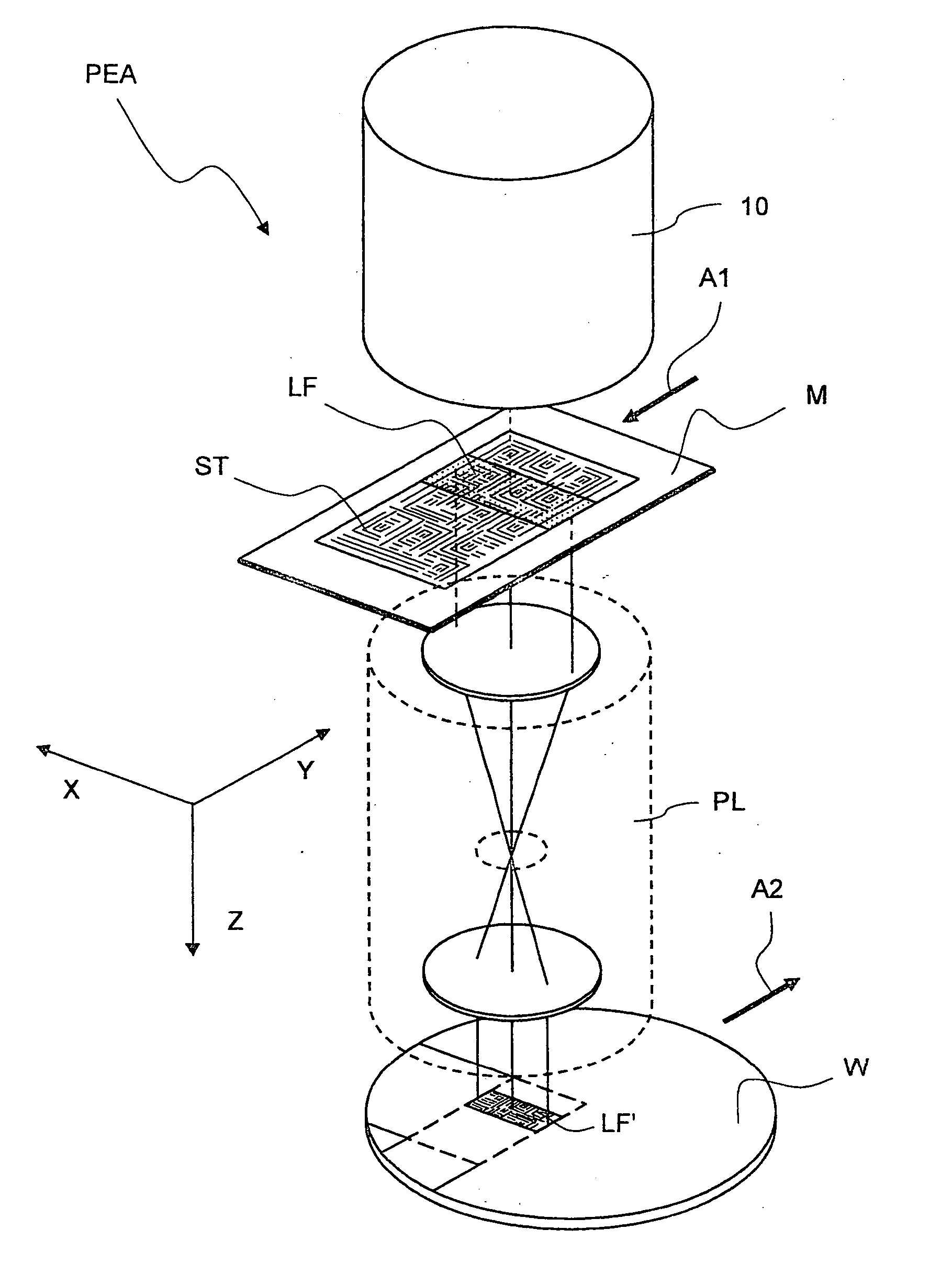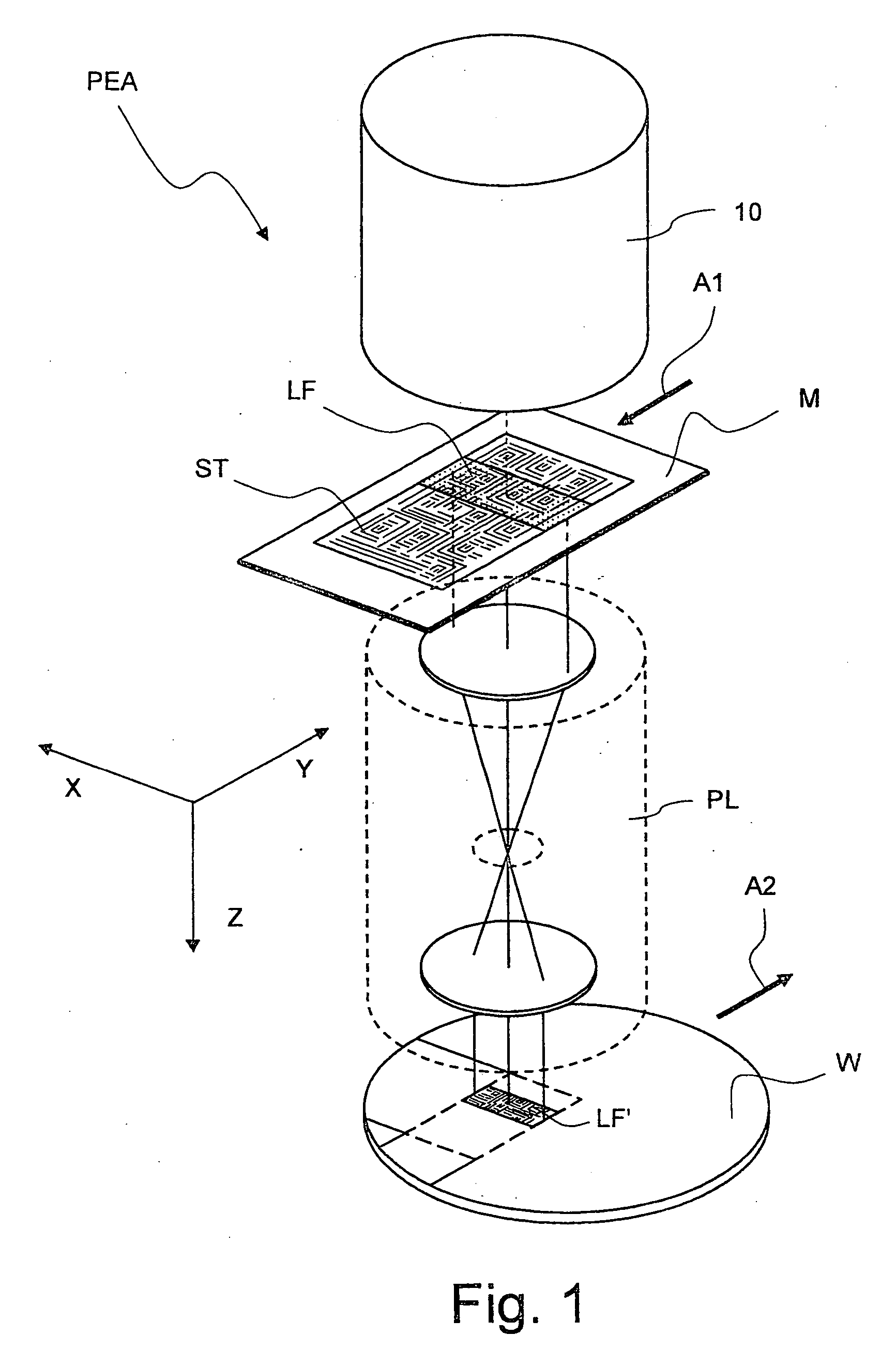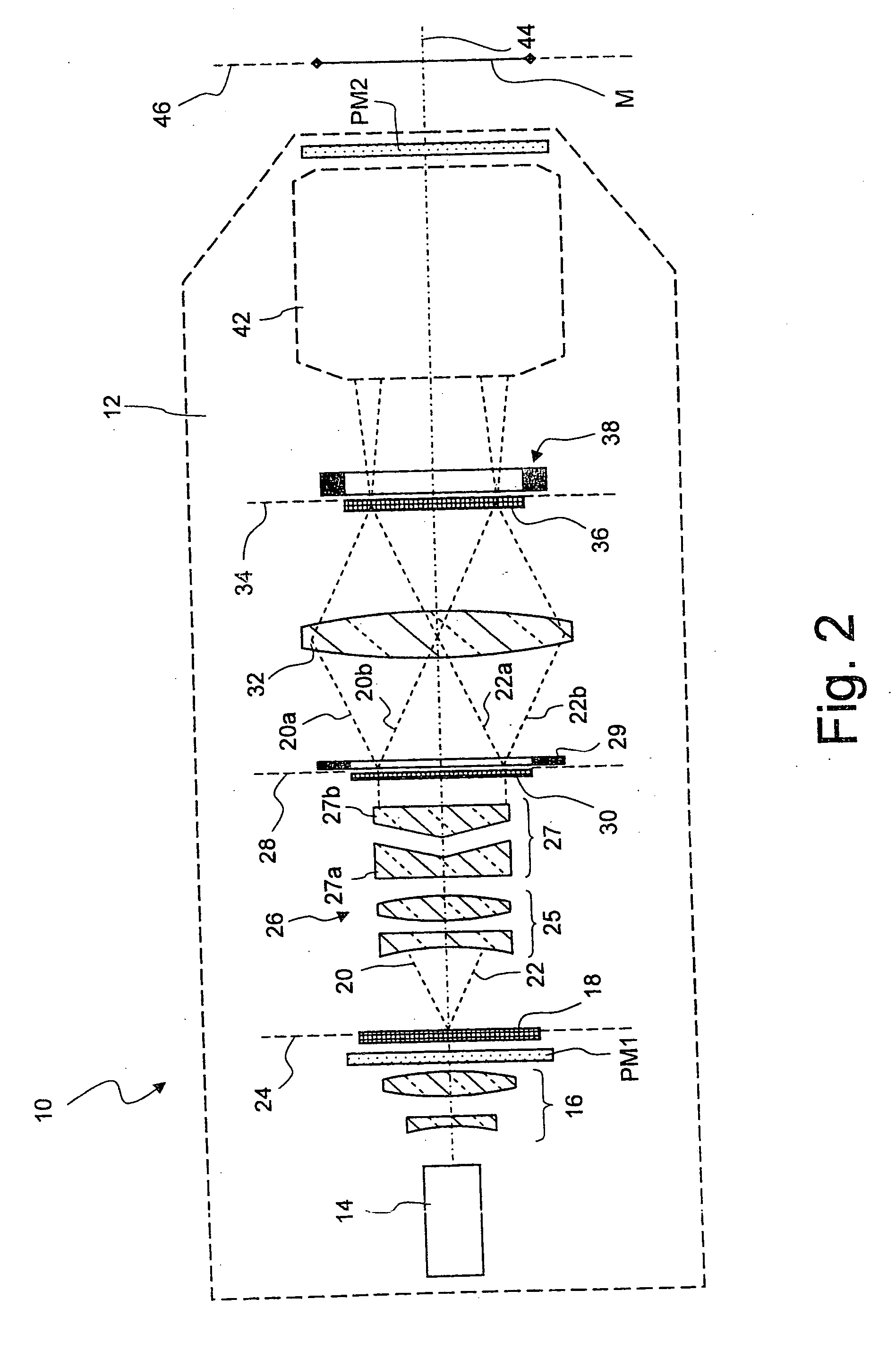Illumination system for a microlithographic projection exposure apparatus
a technology of exposure apparatus and exposure system, which is applied in the field of exposure system for microlithographic projection exposure apparatus, can solve the problems of polarization-induced birefringence, multiple difficulties in illumination of the mask with linearly polarized light,
- Summary
- Abstract
- Description
- Claims
- Application Information
AI Technical Summary
Benefits of technology
Problems solved by technology
Method used
Image
Examples
third embodiment
[0108]FIG. 8 shows an illumination system which is denoted in its entirety by 310. In the illumination system 310 polarization manipulators PM31, PM32 are used which each contain a half-wave plate and an actuator for rotating the half-wave plate around the optical axis OA by a rotational angle α. The actuators are indicated in FIG. 8 by two motors M1, M2. The rotation of the half-wave plates is indicated in FIG. 8 by circular arrows 58, 60.
second embodiment
[0109] As has already been mentioned above, a half-wave plate has the effect of rotating the polarization direction of linearly polarized light by an angle α. The angle α has twice the size of the angle between a principal axis of the half-wave plate and the polarization direction of the incident light. Also in this embodiment, the half-wave plate of the second polarization manipulator PM32 is oriented such that the original polarization direction is restored. If the control unit 356 controls the motors M1, M2 such that they synchronously rotate the half-wave plates by angles in the range between 0° and 45°, the same effect may be achieved as shown in FIG. 7 for the
[0110]FIG. 9 shows a diagram similar to the one shown in FIG. 7. A continuous line represents the variation of the angle α, by which the polarization state is rotated in the first polarization manipulator PM31, during the operation time t of the illumination system 310. The angle β, by which the half-wave plates are rotat...
fourth embodiment
[0111]FIG. 10 shows an illumination system which is denoted in its entirety by 410. The illumination system 410 differs from the illumination system 210 only in that a third polarization manipulator PM3 is inserted into the exchange holder 29. The third polarization manipulator PM3 transforms a homogenous linear polarization distribution into a radial polarization distribution as it is schematically shown in FIG. 11. The radial polarization distribution differs from a homogenous linear distribution in that, although each ray is linearly polarized, the polarization directions differ depending on the position where the ray R passes through the third polarization manipulator PM3. For each position the polarization direction points towards the optical axis running through the center of the third polarization manipulator PM3.
[0112] To this end, the third polarization manipulator PM3 may comprise a plurality of hexagonal half-wave plates that are distributed over the area of the element....
PUM
 Login to View More
Login to View More Abstract
Description
Claims
Application Information
 Login to View More
Login to View More - R&D
- Intellectual Property
- Life Sciences
- Materials
- Tech Scout
- Unparalleled Data Quality
- Higher Quality Content
- 60% Fewer Hallucinations
Browse by: Latest US Patents, China's latest patents, Technical Efficacy Thesaurus, Application Domain, Technology Topic, Popular Technical Reports.
© 2025 PatSnap. All rights reserved.Legal|Privacy policy|Modern Slavery Act Transparency Statement|Sitemap|About US| Contact US: help@patsnap.com



